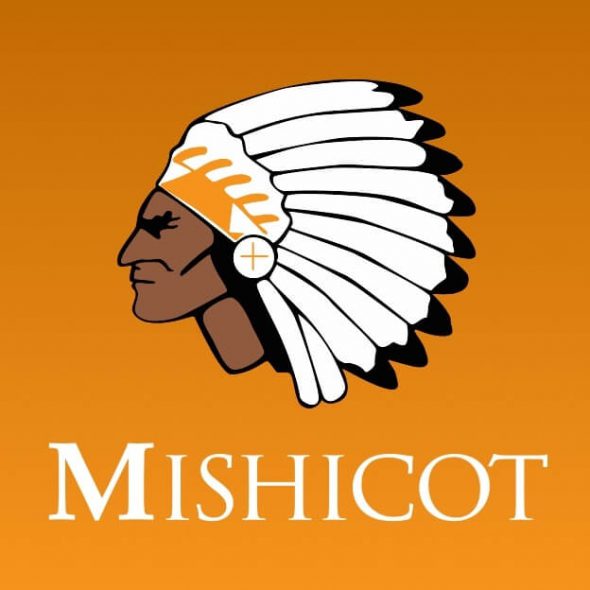School Boards Debate Racial Mascots
Tough talk, but Wisconsin Association of School Boards passes watered down resolution.
School board members voted on a resolution to address the use of racial and ethnic school mascots at the Wisconsin Association of School Boards (WASB) Delegate Assembly on Wednesday, Jan. 20. Although the resolution passed, it was a watered-down version of last year’s resolution that directly challenged the use of Indian mascots, a resolution that was defeated last year with 101 votes in favor, 218 against.
This year’s resolution never mentioned the words Indian or Native American, but it was widely understood that the resolution was addressing the same issue.
Last year, the critics of the resolution against Indian mascots held to the principle of “local control,” meaning that no state organization should be telling a school district what to do. Its rationale was that people within the community are in the best position to know what is best for their community.
Critics of this approach likened the call for local control to states’ rights arguments used for generations to maintain racial segregation and Jim Crow laws in the South. This year, Laura Gapske of Superior was direct and blunt: “Hiding behind local control for issues like this is what kept slavery.”
Toni Cadwell of the Menominee school district told the assembly, in a trembling voice, what it was like to grow up Native American, playing for the Menominee High School athletic teams and going to other schools that used Indian stereotype mascots. She described experiencing racism on the athletic field or in the gym when she traveled to those communities.

The Mishicot School District’s logos include this one of an American Indian in a headdress. School district residents have defended the use of Native American logos and team names, while criticism grows of the practice. Photo from Mishicot School District.
Jill Werner is a school board member in Mukwonago, a district that uses the name “Indians” as its nickname and in its logo. Werner did not contradict any of the charges of racial discrimination. Instead, she argued simply that it took away local control from school districts.
Speaking for the resolution, Rachel Zwicky from Maple said she did not believe retaining an Indian mascot should be left up to the majority of people in a school community. “If there is even one student who does not feel safe, who is negatively impacted by these logos, we have a duty to rectify that.”
The resolution passed 182 yes, 67 no. But this may have been a hollow victory.
Last year’s resolution, which was defeated, directly confronted the use of Native American mascots. It required WASB to support “legislation requiring school districts to retire Native American mascots.” This year’s resolution never mentions Native American mascots, nor does it ask WASB to support any legislation. Instead, the resolution states “The WASB encourages school boards and districts to identify imagery, practices and processes that may create a school environment that is not safe and welcoming to all students, regardless of race, ancestry or ethnicity.”
Last year’s resolution also suggested that school districts be given a reasonable timeline for retiring the Indian mascots, and that school districts be given monetary compensation to undertake changing mascots.
The new resolution has few mandates, charging that school districts “initiate discussions … that would lead to retirement of mascots, logos, imagery practices.” In the end, the resolution preserves local control over retiring some mascots and nicknames.
Wausau’s delegation submitted last year’s resolution and again submitted a resolution similar to that resolution that was voted down last year, says Lee Webster. However, all submitted resolutions go before the WASB Policy and Resolution Committee before they are presented to delegates at the convention.
Webster states that the resolution was extensively rewritten. “There is no question it was watered down,” he adds. Even here, Webster wasn’t sure that this “softer” version would pass. The Wausau school board has three Native American members, and they agreed to support the resolution as it was rewritten once it came to the Delegate Assembly floor.
Bob Peterson was a Milwaukee representative on the WASB Policy and Resolution Committee. He says the resolution that Wausau submitted this year was softer than last year’s resolution. But Peterson questions whether it would have made much sense for the WASB to put forth a stronger statement, challenging the state to pass legislation to require school districts to abandon their Indian mascots. After all, a conservative majority in the state Legislature would unlikely pass such a bill.
Webster says that school districts often do not follow this legal directive, adding that there is no data collection or measurement of compliance. The Department of Public Instruction does not monitor schools to determine if they are teaching Native history or culture. Some school board members questioned the need for this resolution.
S.A.M. Steiner, a school board member from Marshfield, pointed to problems with enforcement of the law. “I have heard from the district level, ‘Well, we don’t have an Indigenous population of children in our school district, so why do we need to have this?’ which I think is unconscionable.”
Other board members questioned the need to allocate more funds for compliance for Act 31. Others questioned why separate funds were necessary for Native American studies and not other ethnic studies programs.
The resolution passed 169 yes, 109 no.
For the people who support removing Indian mascots from Wisconsin schools, the outcome of the resolution remains unclear. It is possible that renewed discussion of the issue and the weak resolution might prod a district or two to retire a school’s Indian mascot. Another real possibility is that school board members will return to their districts believing they have made a statement, while districts committed to local control hold onto their Indian mascots.
Reprinted with permission of Wisconsin Examiner.
Political Contributions Tracker
Displaying political contributions between people mentioned in this story. Learn more.





















